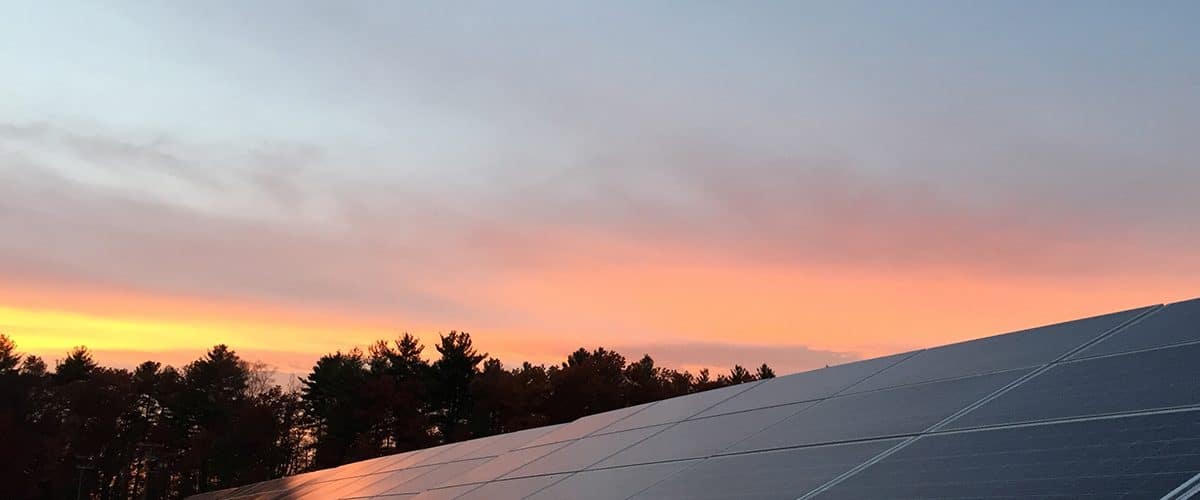Reviewed for accuracy June 2023
Answers to your PPA and VPPA FAQs
Get your questions about PPAs and VPPAs answered here. Check back frequently for updates. Have a question that you need answered? Contact us.
Frequently Asked Questions:
- Why are so many companies signing power purchase agreements (PPAs)?
- What is a power purchase agreement (PPA) and how does a PPA work?
- What is a virtual power purchase agreement (VPPA) and how does a VPPA work?
Q: Why are so many companies signing power purchase agreements (PPAs)?
A: From 2015-2017, corporations have signed approximately 7 GW of either virtual or physical PPAs in order to address their scope 2 emissions, support a de-carbonized grid, take advantage of all-time low costs of renewable energy and capture the value of declining tax benefits. Most of these early movers used a well-proven structure (called a “contract for differences”) to enable them to gain economies of scale by signing large volumes from wind or solar projects in a financially optimal part of the country and then using those RECs to address their load elsewhere. These long-term corporate contracts were directly responsible for enabling the financing of these renewable energy assets, thus also giving corporates the ability to prove their commitment to tackling climate change.
Q: What is a power purchase agreement (PPA)? How does a physical PPA work?
A: A power purchase agreement (PPA) is a contract between two parties where one party (usually a renewable energy project developer) sells both electricity and renewable energy certificates (RECs) to another party (the buyer, sometimes called the offtaker). PPAs are a good mechanism for companies to make a long-term commitment to purchasing renewable energy.
Traditionally, the most common type of PPA has been the physical PPA. This type of contract is used most often by utilities for their energy procurement but a few experienced companies have also utilized this structure.
A physical PPA is structured as follows:
- In order to participate in a physical PPA, both the buyer, or a third party scheduler, and the seller must obtain a license through the Federal Energy Regulatory Commission (FERC).
- The seller (e.g. the project developer) builds, owns and operates the renewable energy project and sells the project generation and corresponding RECs as the revenue source to finance the construction of the project.
- The buyer purchases the energy and RECs as they are generated by the project.
- The buyer takes legal title to the energy and the RECs at a delivery point agreed upon by the parties, either the project busbar or a nearby trading hub.
- After the buyer takes title to the energy, it is responsible for the management of the energy – moving and scheduling the energy to its load or selling it into the wholesale power market. In addition to the aforementioned FERC license, this also requires forecasting of the project generation, the company’s load and scheduling experience. Some companies elect to use a third-party service provider for scheduling.
Companies that have elected to pursue physical PPAs typically are highly experienced energy buyers and have large, geographically-consolidated electricity load. They prefer to actively manage their energy supply and demand in parallel with meeting their renewable energy goals.
For more information on how PPAs and VPPAs work, see our article Renewable Energy Power Purchase Agreements.
Q: What is a virtual power purchase agreement (VPPA)? How does a VPPA work?
A: A VPPA is a specific type of a PPA contract, used to procure long-term renewable energy. Unlike a physical PPA, with a VPPA the buyer does not receive, nor take legal title to the energy and thus the “virtual” moniker. The buyer continues to receive physical power from its utility or retail provider, allowing the buyer to utilize a VPPA in a different region than where it uses electricity.
In a VPPA (also sometimes called a “contract for differences”), a buyer pays a fixed price to the seller for the project’s generation and associated RECs. Instead of taking title to the power from the facility, which requires a FERC license and scheduling expertise, the energy is liquidated into the wholesale power market by the seller. When the energy is sold into the wholesale power market, it receives the corresponding floating market price and this revenue is passed through to the buyer.
More specifically, a VPPA is structured as follows:
- Similar to a physical PPA, the seller in a VPPA is typically a renewable energy project developer who builds, owns and operates the project. The fixed PPA price it receives from the buyer under the VPPA is the revenue source used to finance the construction of the project.
- The buyer agrees to pay the seller a fixed price for every MWh renewable energy generated by the project. This fixed PPA price is the guaranteed price the developer will receive for its project.
- The project developer (or its agent) is responsible for selling the project output into the wholesale power market, receiving a market price on the agreed upon delivery point – either the project node or a nearby trading hub.
- The “contract for differences” settlement is a comparison between the fixed price and the floating market price. When the market price exceeds the fixed VPPA price, the developer passes the positive difference to the buyer. When the converse is true – the market price is below the fixed VPPA price ‒ the buyer pays the developer the difference.
- The buyer retains all of the RECs associated with the generated energy purchased under the VPPA.
For more information on how PPAs and VPPAs work, see our article Renewable Energy Power Purchase Agreements.

